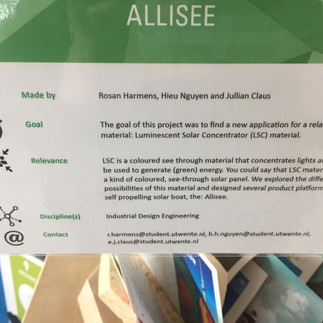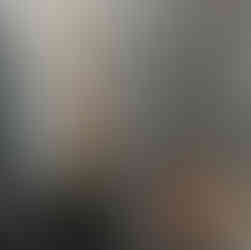Can Hope and the Future be Guides for Design? University of Twente's DesignLab
- asafford4
- Jul 19, 2022
- 6 min read

Design Lab is a dreamy place that goes beyond the concept of a maker space in that who they design for and what they design matters. Morals are at the center of their work; they design and problem-solve to improve life for citizens.
It’s located on the eastern border of the Netherlands, and a took a few trains and longish bike ride to get to the University of Twente, home to DesignLab . I had been here once before with my co-explorer Alan and was ready to take a deeper look.
Design Lab self-describes as:
“A COLLABORATIVE ECOSYSTEM FOR INNOVATIVE CHANGEMAKERS”*

Flavia Carvalho De Souza hosted my tour. Flavia is Design Lab’s Project Officer and Country Coordinator for India. She emphasized that Design Lab was a collaborative platform, one that combines high tech and human touch. It was very important to the Lab and the university that it is not attached to any one department, but is independent and accessible to all. As De Souza says, “interdisciplinary is our middle name.”
Collaborative making with ethical guidelines is their focus.
The Design Lab is also student-centered not just in project creation, but in establishing the philosophy and values of the Design Lab, fulfilling their belief that non-hierarchical communities lead to better results. It ties in well to my home school’s progressive origins.
I was there at lunch time and was able to watch a Tosti Talk. A tosti is a ubiquitous Dutch grilled sandwich, and eating them is a good excuse to gather. Students make tosti’s, propose, interrogate, and discuss ideas. Anyone can come to these brainstorming sessions, peer to peer knowledge is shared in a casual setting. When you bring in non-experts, ideas are looked at in fresh ways. Ultimately it can lead to stronger ideas.

The role of the designer is changing in Flavia’s view. At Design Lab, design is not just about physical objects, but is an approach to examine structures or questions, or even to discover and address a problem. They employ design thinking** as a new approach to generate ideas.
In an era when we are reckoning with colonialism and climate change, including the political and social implications, to change the role of the designer makes sense. It’s likely that changing many definitions and assumptions of the past makes sense. Business as usual seems naïve at best, and harmful at its worst.
Some examples of problems they were working on when I was there:
The Posture Vest
Drug Dumping
Additional student projects. The center map shows the origins of various people who have worked at the lab.
Design Lab often works with private corporations, which made them different from other creative spaces I have seen. What is key is the guiding principles of their values, and the public’s needs. In other words, it wasn’t about making goods more sellable, but more about improving daily life for citizens. Often it looked at how the company serves its consumers. The values that come up repeatedly are “responsible futuring”***, “responsible design”, “social involvement”, “social and moral efforts”. Their site goes in depth into what those phrases mean to Design Lab. (LINK)
You can see how many of the Design Lab’s values inspired my proposal for the Nest. Flavia talked about the value of hands-on-work and the tangibility of the object and materials, developing and employing skills-based techniques, as well as prototyping. The Tosti Talks are a creative addition to the prototyping process.
Images of various work spaces at DesignLab including 3D printers, whiteboards for ideation, material reuse, hands on tools, a circular table with chairs made to replicate that circle, and an ideation space.
Hands-on was clearly a value. This was made apparent in many ways: recycled materials to take and use, small shops with well-organized tools to help create, staff to help train and trouble shoot, shelves full of drawing and writing materials, white boards to illustrate connections and processes, and finished projects to stimulate thought and play. Visually, it is an engaging playhouse that draws you in.
Images of the personal and collective workspaces, displays of projects, and an interactive light piece (which I unfortunately can't remember what is measures)
The set up was created with their core goals in mind. Design Lab believes the physical set up can facilitate idea generation and collaboration (allowing for proximity), and they change the physical set up based on current needs. The spaces are open, and the furniture and structures are movable so it can respond to current needs. The only closed spaces are shop related with heavy tools and need for ventilation.
It was an inspiring trip, and one that again made me want to be part of that kind of learning environment. I check in often on their Instagram and would encourage you to do that same if you are interested in design to help citizens.
*There are certain words, lingo, that you see used over and over again in Dutch organizations. It’s almost a game at this point: platform, ecosystem, changemakers, entrepreneur…I have learned to be more tolerant of it, but it does begin to mean nothing after a while. Clarity and direct communication vs. lingo is my personal preference.
**I have mixed feelings about design thinking for a multitude of reasons, and too much of a tangent to go into here, but the second paragraph of the Wikepedia definitions touches on my concerns:
Design thinking is a term used to represent a set of cognitive, strategic and practical processes by which design concepts (proposals for products, buildings, machines, communications, etc.) are developed. Many of the key concepts and aspects of design thinking have been identified through studies, across different design domains, of design cognition and design activity in both laboratory and natural contexts.
Design thinking is also associated with prescriptions for the innovation of products and services within business and social contexts. Some of these prescriptions have been criticized for oversimplifying the design process and trivializing the role of technical knowledge and skills.
-so sayeth wiki
*** The idea of studying the future is one that has started to surface in the mainstream of recent, including a recent show called Futures at the Smithsonian. Design Lab addresses it in “co-shaping the futures we want to live in”. The idea of the future as a field of study seems both smart and important in these times. To say there is a future, and we have a role in shaping it is a radical act. Design Lab’s statement talks about thinking of “future impact”, meaning what will this leave for others to contend with? Changing that mind set from the ground up seems imperative, and one I think students are hungry for.
Questions and ideas my visit to DesignLab at University of Twente leaves me with:
A main idea that I come back to often, is how can we connect the idea of designing with the idea of hope. When so much in the world feels beyond our control (and beyond our protestations), how can we teach youth that they do have power and can effect change?
The students (and adults) at Design Lab have control over the moral choices in who and how they collaborate with corporations if at all, which to me is a radical idea. The idea that creating has functions other than making money is appealing in times when we are seeing the results of money above citizenry. On the cynical (but not unrealistic) side, I worry about corporations following the trends of green washing and its social equivalents. While pressure to do right is not a bad thing to trend towards, it must be deep and consistent, and we must call out those who are only interested in the image.
So ultimately, how do we teach hope, and the action that it demands? While I don’t have a clear answer, I am working towards this.
It also furthers my desired goal of creating an alternative to a maker space which couples ideas of hope and engagement in the world, and what creating can teach our minds and our hands. I want students to engage with problems that often seem too large, on a both personal and local level where they can begin to effect change.
Design Lab at University of Twente
Design Lab’s Responsible Futuring
More on Flavia
Why We Need a Department of the Future
Smithsonian Show on the Future














































Comments